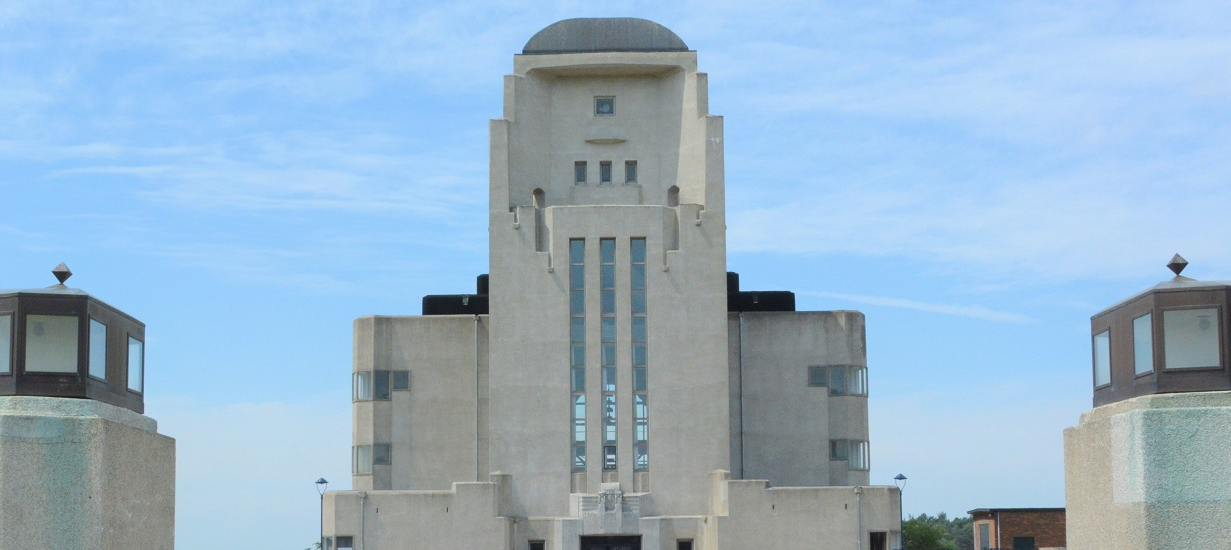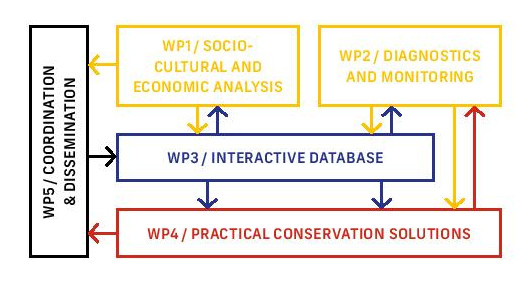
Project facts
Presentation
CONSErvation of 20th century concrete Cultural Heritage in urban changing environments is a European Project supported by the JPI CH Heritage in Changing Environments programme which will run from 2019 to 2021.
CONSECH20 aims at developing innovative approaches for the conservation and protection of 20th cent. heritage concrete buildings against the ever-changing urban impacts, taking into account both technical and social aspects. The 20th cent. concrete heritage is a major challenge for conservation both because of its remarkable architectural variety and experimental character in use of materials and technologies as well as due to the lack of recognition of its cultural and historical value by the wide public. These aspects, together with the fast-changing urban environment, are leading causes of its deterioration and, sometimes, demolition.
CONSECH20 focuses on constructions built with 20th cent. historic concrete (primarily until 1960) with social interest in the sense of bringing people together (e.g. for recreation, inhabiting, working) to strengthen the link between society and 20th cent. architectural heritage. CONSECH20 will:
- Increase the potential of 20th cent. historic concrete CH as a promotion vector for social integration and cultural tourism,
- Contribute to the establishment and development of the notion of Heritage Science, a relatively new and emerging field of science that aspires to bridge the gap between humanities and applied sciences,
- Outline new approaches to participatory monitoring and conservation/restoration for future use of modern architectural heritage by stakeholders, and
- Outline new approaches for citizen engagement in the protection of modern architectural heritage.
The objectives of CONSECH20 will be achieved through a methodological approach involving the following 5 complementary work packages (WPs):

Impacts & Results
Contribution to increased citizens’ awareness of 20th century architectural CH
CONSECH20 will activate new social resources (e.g. new possible users, improved policies) and sensitivity to take care of our living heritage by raising citizens‘ awareness on the CH values of public landmarks, which are nowadays often abandoned. A continuous monitoring practice by stakeholders is a good way to address conservation issues and have a positive impact on the cost reduction of interventions, life quality, tourism, and real estate sector. The project proposes the development of activities for the active involvement of selected groups. Raising social awareness on the heritage values of early concrete buildings of the 20th cent. and on the benefits of their preservation through in-depth multidisciplinary analysis of relevant case studies will instigate citizens’ collaboration and promote the consolidation of community identity values. Networking and dissemination actions will ensure that the opportunity to participate in conservation decision-making processes will reach the wide public. The involvement of high-level stakeholders as Associate Partners will help in the multilayered description of the local, regional, national and international contexts for the successful implementation of the project. The compiled information will support in identifying and anticipating challenges and guide communication, stakeholder outreach and other critical decisions. Moreover, the APs will also help in the appreciation of the research process, foster relationships between people, between competing priorities, and among social groups, organizations and institutions. Moreover, the CH of the 20th century has been based on the cross-fertilization of ideas at an international level and reflects the cultural diversity of each area. Therefore, it has enormous potential for social integration including tackling the current refugee and asylum crisis.
The development of a reflective society regarding the relationship between identity, social perception of heritage image, values, and ethics (involving user groups) in a participatory way will ensure a living archive to the future. Furthermore, if the lack of technical knowledge emerges as a systematic issue in the conservation of modern architectural heritage, many people who worked on the construction of current CH buildings can be invited to participate and to share their experience; this can constitute a source of crucial knowledge for advancing the field of conservation of this heritage.
Contribution to promoting inclusive growth, and improving competitiveness
CONSECH20 will bring together existing information and develop new knowledge on early concrete as a basis for conservation work. Advancing the field of construction history and building archaeology will facilitate the understanding of material properties and damage mechanisms, and also aid in the development and selection of suitable restoration techniques while instigating craftsmanship. The reassessment of past conservation projects will also be a major source of information for the development and improvement of our understanding of conservation treatments. An atlas of concrete types (constituent materials, reinforcement types, deterioration patterns) including wizards for their identification will support practitioners in defining the state of conservation of early concrete materials and systems.
Preventive maintenance and risk mitigation imply a new paradigm in conservation towards sustainability and safety. The to-be-developed tools for the inventory and evaluation of damage to heritage concrete buildings will aid end-users in the collection and monitoring of data related to concrete damage. This will improve the efficiency in decision-making processes, and restoration and adaptive re-use interventions, hence increasing the resilience of buildings and reducing costs with interventions. Manufacturers of restoration materials will also benefit from the technical knowledge produced in this project. Moreover, manufacturers’ data sheets of conservation materials do not always display all the information that a user may wish to see, and this is an opportunity to highlight the importance of such information. The project will also foster the utilisation of sustainable materials and techniques for conservation.

